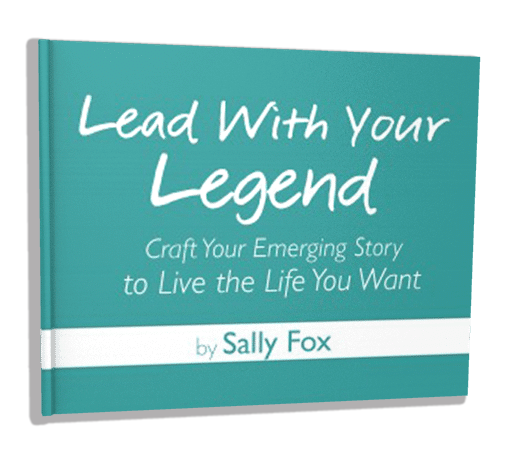[et_pb_section bb_built=”1″ admin_label=”section” _builder_version=”3.0.47″][et_pb_row admin_label=”row” _builder_version=”3.0.48″ background_size=”initial” background_position=”top_left” background_repeat=”repeat”][et_pb_column type=”4_4″][et_pb_text _builder_version=”3.17.6″ background_size=”initial” background_position=”top_left” background_repeat=”repeat”]

When the waves of change are high, stories help us navigate.
Still, we need to be discerning and recognize bad stories when we hear them.
I’m not just thinking of the 1964 film The Incredibly Strange Creatures Who Stopped Living and Became Mixed-Up Zombies that earned a nomination for one of the worst movies of all time. It’s honestly bad.
Or the stumbling, disjointed story told by a geeky engineer in his first attempt to tell a story about himself. He honestly tried and earned a big round of applause from me.
I’m talking about stories that lie. Circulate hearsay and flame hate. Spread information that’s reported out of context. Fail to acknowledge their sources and biases.
Sadly, a lot of such stories are flying high these days.
Stories shape meaning
Stories help us to make meaning in times of unrest and uncertainty.
As chaos grows in the world, so, too, does the need for meaning. No wonder we see a growing interest in storytelling.
But when times are confusing, as 2018 was for many of us, we need to choose our stories carefully.
We don’t need more stories that promise an easy way out of chaos, responding to our fears with more fear and offering simplistic, half-baked answers, while looking for ways to create villains onto whom we can project our anxieties.
If we want to create meanings that lead to a more positive future, we need to pause before jumping on the first answers we find and think about what we’re sharing as memes and messages before we hit the send button.
While we strive to do no harm.
An Inspiring Conversation
I just listened to a very stimulating conversation by two of my favorite story-catcher/story-activists, Christina Baldwin and Mary Alice Arthur. They were speaking as part of an exceptional (and mostly free) program called “Story the Future Learning Encounter.” (Lots of free resources-learn more here.) These women have spent years exploring how to use storytelling to promote a more positive, participative, socially just, and environmentally conscious, future.
“Our job as STORYCATCHERS is not to change our history, but to carry it differently. To carry it with resilience. And that is sometimes really hard work.”
Christina Baldwin
They invited me to think about how we use stories.
We live within stories
There’s nothing wrong with writing stuff that isn’t true. It’s called fiction. If you want to write The Giant Squid Who Fell to Earth, terrific. I promise to read it, knowing that it is your invention.
But fiction disguised as fact is another thing.
Of course, most of us wouldn’t intentionally spread untruths. Yet, I still tell myself stories that were never true: that I can’t sing in a chorus (Source: 2nd grade), that I can’t draw (3rd grade), that I’m not pretty enough or valuable enough (ongoing). These stories were never true, and yet they’ve shaped my life. I need a big dose of self-compassion to unravel them, slowly and gently, letting go of parts of what I thought was my identity.
We’ve grown up amid big, cultural narratives that have tolerated the abuse of women, minorities, immigrants, gays, and other people with noticeable differences. The stories that have held bigotry in place have been considered true but never were. Our culture has valued certain narratives while ignoring the stories of many.
I watched the movie Loving and was shocked to learn that laws in Virginia prohibited interracial marriage until 1967. The reasons given to justify such discrimination seem barbaric to me today.
I imagine that someday I may look back on our current era and ask, “How could we have ever believed that?”
We’re all “repeaters” in the field of culture, choosing which stories to pass on, which facts to share.
Sharing on social media is too easy. One click and we can reach thousands. But how do we know if what we’re sharing is true? When do we pause and ask whether the messages we’re sending are consistent with our values and inner moral code? Who will these stories hurt? Who will they exclude? Why are we choosing to send them?
Before we share a story on social media or publicly, why not ask:
- Do I know the source of this information?
- Am I only sharing information that jibes with my point of view, without considering other information that may be lying by the wayside?
- Am I sharing stories intended to make me look better than others?
- Am I listening to stories that would have me doubt my self-worth?
Using stories for good
Christina Baldwin offers those who would gather and share stories some factors to think about. I paraphrase:
1) Respect resilience.
All around us are everyday heroes doing their best to survive. Everybody goes through a lot in life. We can encourage people to examine and re-evaluate their stories while applauding their perseverance.
2) Stay tethered to facts and reality.
We’re in dangerous times. People act as if facts don’t matter and can be made up on the spot. Our job is to recognize the filters through which we’ve seen the world. We’re all biased. Those of us who are cultural storytellers need to be trustworthy and to acknowledge our biases even as we work to change them.
3) Offer compassion and empathy.
People are hurting. These are times to both acknowledge differences and find commonalities that can help us bridge divides–as we open our hearts to the worlds of others.
4) Make meaning wisely.
Understanding context is critical. Don’t jump too fast to knowing what things mean. Live the questions. Some of my former leadership students were hard-wired to move into action without much reflection and they often paid a price for this.
We can’t expect to double click to find answers to today’s tough questions.
We all carry biases. If I want to challenge others, I need to ask myself, “How do I know this? Why do I think it is true?” Then, I’ll be more qualified to explore with others how they see the world.
Be kind
Finally, let’s support each other and appreciate the tenderness that comes with giving birth to heartfelt, personal stories. As these stories emerge, especially from those whose stories have not been valued, let’s hold them with respect, compassion, and generosity.
Truth is powerful and endangered. We can champion stories that expand our vistas and offer new hope without distorting facts.
If you want to make things up, try writing about that giant squid.
Thanks to Christina Baldwin and Mary Alice Arthur for the wisdom that inspired this piece. And do check out www.storythefuture.org where you can sign up for a learning encounter with free interviews that will continue over the next two weeks.
[/et_pb_text][/et_pb_column][/et_pb_row][/et_pb_section]










